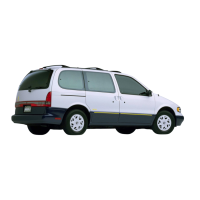
Do you have a question about the Mercury 1999 Villager and is the answer not in the manual?
| Brand | Mercury |
|---|---|
| Model | 1999 Villager |
| Category | Automobile |
| Language | English |
Explains various warning lights and chimes on the instrument cluster, including standard and optional displays.
Details the function of tachometer, speedometer, odometer, and fuel/temperature gauges on instrument clusters.
Describes functions like outside temperature display, fuel economy monitoring, and range estimation.
Explains fan speed, temperature, mode, and A/C controls for heating and cooling.
Covers AM/FM radio, cassette, CD changer operation, and volume controls for the car's sound system.
Details how to activate, set, and disengage the cruise control system for maintaining vehicle speed.
Explains operation of wipers and washers for visibility in different weather conditions.
Describes operation of power windows, including one-touch down and window lock features.
Instructions for programming the HomeLink system to operate garage doors and other devices.
Explains how to lock/unlock doors and activate the panic alarm using the key fob.
Describes how the anti-theft system arms, disarms, and triggers to prevent unauthorized entry.
Explains how to properly adjust head restraints for occupant safety in rear collisions.
Covers general precautions for using safety belts and child restraints to ensure occupant safety.
Details SRS precautions, operation, and importance of wearing safety belts with airbags.
Provides guidance on selecting and installing child safety seats correctly for maximum protection.
Explains the use, features, and proper installation of the vehicle's integrated child seat system.
Outlines essential steps and safety checks before starting the vehicle engine.
Step-by-step instructions for starting the vehicle's engine, including cold weather considerations.
Important safety information about the dangers of carbon monoxide and exhaust fumes.
Discusses brake system operation, normal noises, and the function of the Anti-lock Brake System (ABS).
Explains how to set and release the parking brake and its limitations.
Describes gearshift positions, adaptive learning, and overdrive operation for optimal driving.
Defines key terms like GVWR, GAWR, and payload to ensure safe vehicle loading.
Provides guidelines and safety information for towing trailers, including weight limits and equipment.
Instructions on using hazard flashers to warn other traffic in emergencies.
Procedure to reset the fuel pump shut-off switch after a collision or jolt.
Information on identifying blown fuses, their ratings, colors, and locations within the vehicle.
Guidelines and precautions for using the temporary spare tire, including speed and load limits.
Step-by-step instructions and safety precautions for jump-starting a vehicle using jumper cables.
Steps for safely opening the vehicle's hood to access the engine compartment.
Instructions for checking, adding, and recommended types of engine oil and filter.
Guidance on checking and adding the correct type of brake fluid to maintain braking performance.
Information on checking and adding engine coolant, including proper mixture and specifications.
Details on battery maintenance, electrolyte levels, cleaning, and handling safety precautions.
Instructions on checking wiper blade condition and replacing them for optimal visibility.
Explanation of tire grading systems (Treadwear, Traction, Temperature) as per DOT standards.
Guidance on checking tire pressure, adjusting it, and tire rotation for even wear.
Instructions on proper use and replacement of the fuel filler cap to maintain fuel system integrity.
Methods for calculating vehicle fuel economy and tips for improving it through driving habits.
A list of Motorcraft part numbers for various vehicle components and fluids.
Specifications for fluid capacities such as engine oil, coolant, brake fluid, and fuel tank.
Detailed specifications for lubricants, greases, and fluids used in the vehicle.
Technical data for the engine, including cubic inches, required fuel, firing order, and compression ratio.
Key physical dimensions of the vehicle, including overall length, width, height, and track.
Information on the location and purpose of the vehicle's safety certification label.
Details on Ford's complimentary roadside assistance program, coverage, and contact information.
Information about optional service contracts for extended protection beyond the warranty period.
Guidance on obtaining service at dealerships and escalating concerns if unsatisfied.
Information about the arbitration program for resolving warranty disputes.
Contact information for ordering additional owner's manuals and publications.
Instructions for reporting vehicle safety defects to NHTSA and Ford Motor Company.

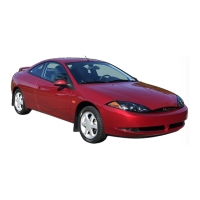
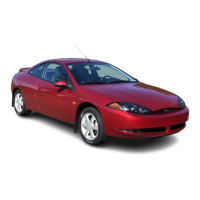

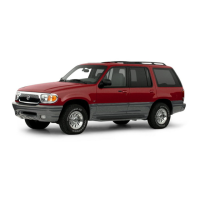
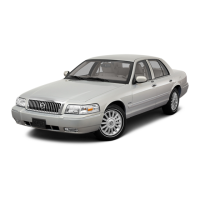

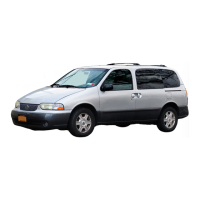

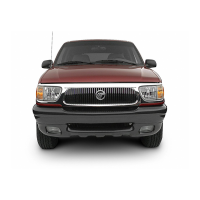

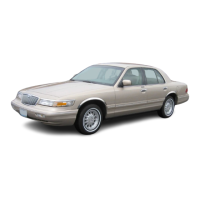
